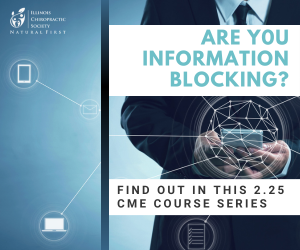
Steps Following a Disaster

Tornado season has arrived in Illinois, and, unfortunately, we have often witnessed its destructive potential. As a chiropractic physician, it is crucial to have a comprehensive disaster recovery plan in place, ensuring the continuity of care for your patients and the protection of your practice’s valuable resources. This article provides essential guidance for chiropractic physicians in Illinois, outlining the necessary steps to prepare for and recover from the devastating aftermath of a tornado. In an industry dedicated to healing and wellness, it’s paramount to remain resilient in the face of nature’s most turbulent storms, and to ensure accessibility to patient records as is reasonably practicable.
What Are My Steps Following A Disaster?
The following steps assume that your office does not currently have a disaster plan in place. If you have a plan, please follow your plan. However, if you are looking for assistance in the absence of a plan, you may use the following as a guide:
Step 1: Document Your Damage:
- Take photos of the entire office (damaged and undamaged),
- Take videos of the entire office,
- Document other areas of financial concern:
- Lost business/reimbursements – support this by documenting with photos, etc. how paths to the office are impacted,
- Employment wages for employees,
- Immediate need for payment to creditors (regular bills due, a mortgage payment due, lease payment due, association membership dues payments, etc.).
Step 2: File A Claim With Your Insurance Carrier.
Most relief funds are contingent on insurance filings (i.e., FEMA). Check with your agent on available coverage, including:
- Damage insurance – make sure your coverage will handle the type of disaster you have incurred (i.e., flood insurance).
- Liability insurance – check how this coverage may assist you when others may be affected/injured by damage sustained by your office.
- Business Interruption Insurance
Step 3: Determine If You Are Eligible For Other Relief Funds.
These resources may be available when the federal government has declared the area a disaster area (this is different than Illinois’ Governor declarations). FEMA lists the disaster declarations in Illinois here.
- FEMA – 1-800-621-FEMA (3362),
- Disaster Relief Loans through SBA – 800-659-2955 – Low-interest loan assistance may be available up to $2 million and can be used for real estate, inventory, and/or economic loss. Interestingly, these loans may be available for personal purposes as well, including clothing, furniture, cars, appliances, homes, etc. Your place of business must be in a declared disaster area and may include:
- Economic Injury Disaster Loans
These loans are designed to relieve businesses having difficulty meeting obligations and other necessary operating expenses. Interest on these loans appears to not exceed 4%. - Business Physical Disaster Loans
These loans are geared towards replacing or repairing damaged property.
- Economic Injury Disaster Loans
Step 4: Tax Considerations
Check with your tax professional, as you may be able to deduct losses on your federal and state income tax returns. In federally declared disaster areas, expedited refunds may be available.
Step 5: Other Possible Funds
There may be special funds established to assist small business owners following a disaster. Check with the Red Cross, your membership associations, the local Chambers of Commerce, and other organizations.
Step 6: Temporary Locations
Check with other physicians in the area to attempt to find a temporary location to treat patients. There is no perfect solution here, but in order to mitigate your losses, you may want to look for alternative locations in the short term.
Other Considerations:
If you document in whole or in part on paper, you may need to consider how to recover your records or how to document the loss of records. If the documents were disbursed into the open as a result of the disaster, or you suspect that a breach of any kind has occurred, please follow the appropriate HIPAA breach notification guidelines, once you have enough information. Here are some articles online:

















